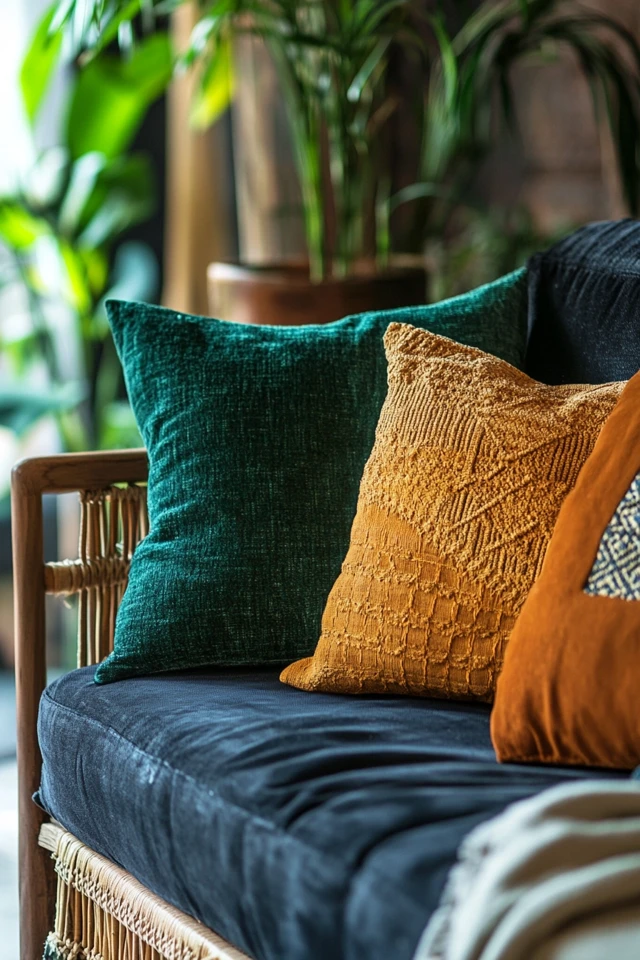Introduction
There’s something inherently calming about being surrounded by natural materials. In bohemian design, these elements do more than just add visual appeal—they connect your space to nature, creating a sanctuary that feels grounded and serene. I remember the first time I incorporated natural materials into my boho-inspired living room. I added a handwoven jute rug, a few rattan chairs, and a reclaimed wood coffee table. Suddenly, the room felt warmer, cozier, and more inviting. It was as though the natural materials breathed life into the space, making it feel alive and timeless.
Bohemian interiors thrive on the interplay of textures, earthy tones, and organic shapes, all of which are beautifully captured by natural materials. Whether you’re styling a cozy nook, a dining area, or an expansive open floor plan, integrating these elements helps create the effortless, eclectic vibe that defines bohemian design.
This guide explores the natural materials that are essential to achieving a boho-inspired interior and offers practical tips on how to use them to craft a space that’s rich in texture, warmth, and personality.
The Perfect Design for You
A bohemian interior filled with natural materials is perfect for anyone seeking a home that feels relaxed, soulful, and connected to nature. Imagine a room with woven rattan furniture, a soft wool throw draped over a linen sofa, and a handcrafted wooden table adorned with ceramic vases. The combination of natural textures and materials creates a space that feels effortlessly stylish and uniquely yours.
Natural materials are also ideal for eco-conscious decorators who want to incorporate sustainable, long-lasting elements into their home. They pair beautifully with boho’s emphasis on individuality, allowing you to curate a space that reflects your style while honoring the environment.
Picture Gallery
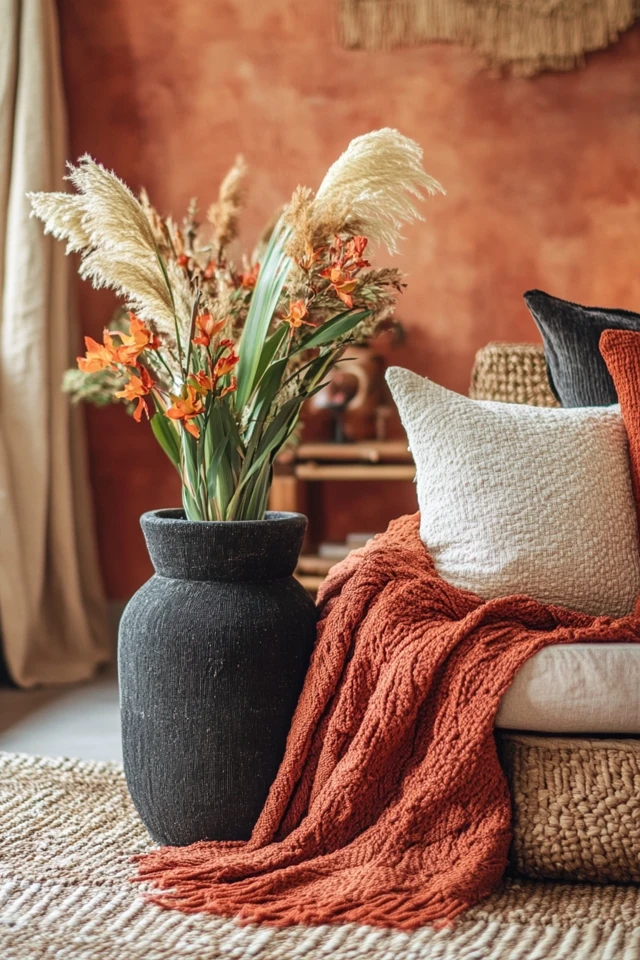
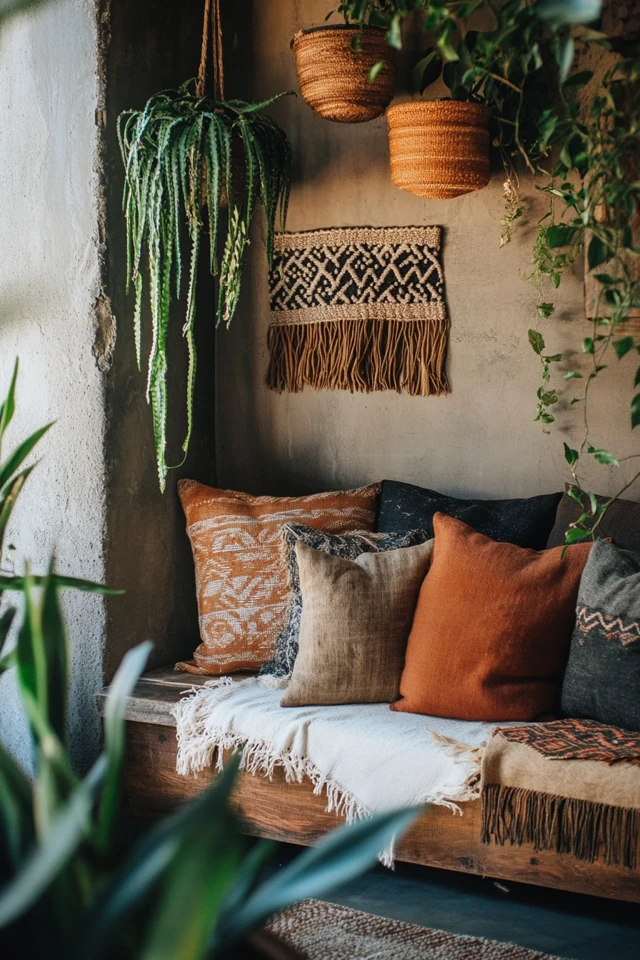

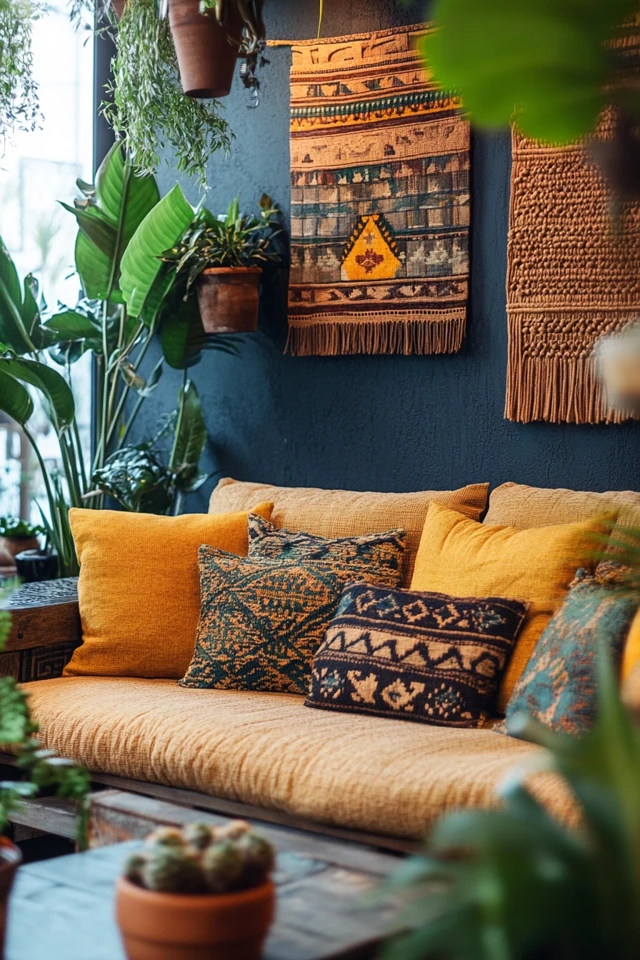
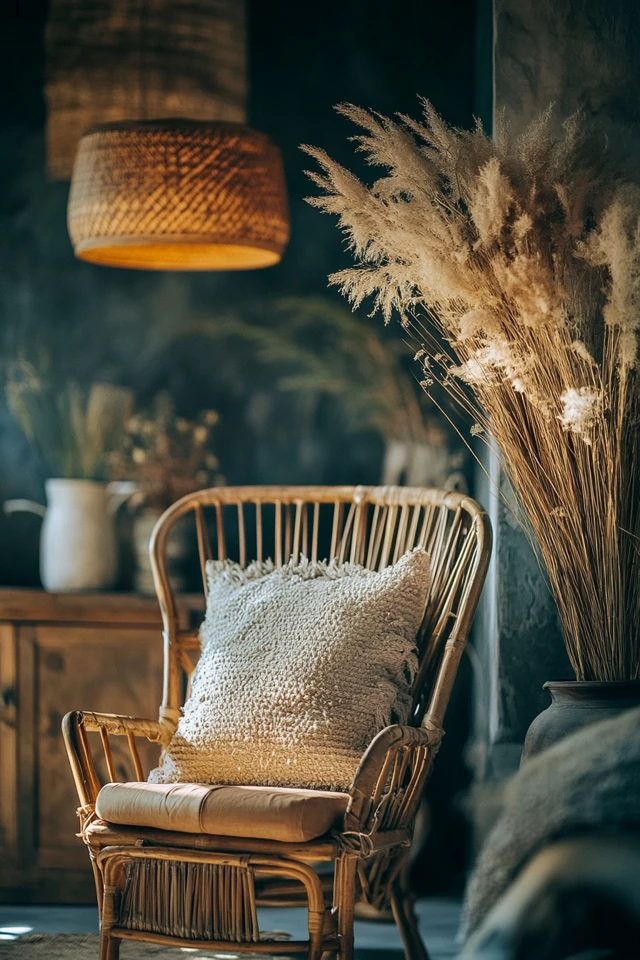
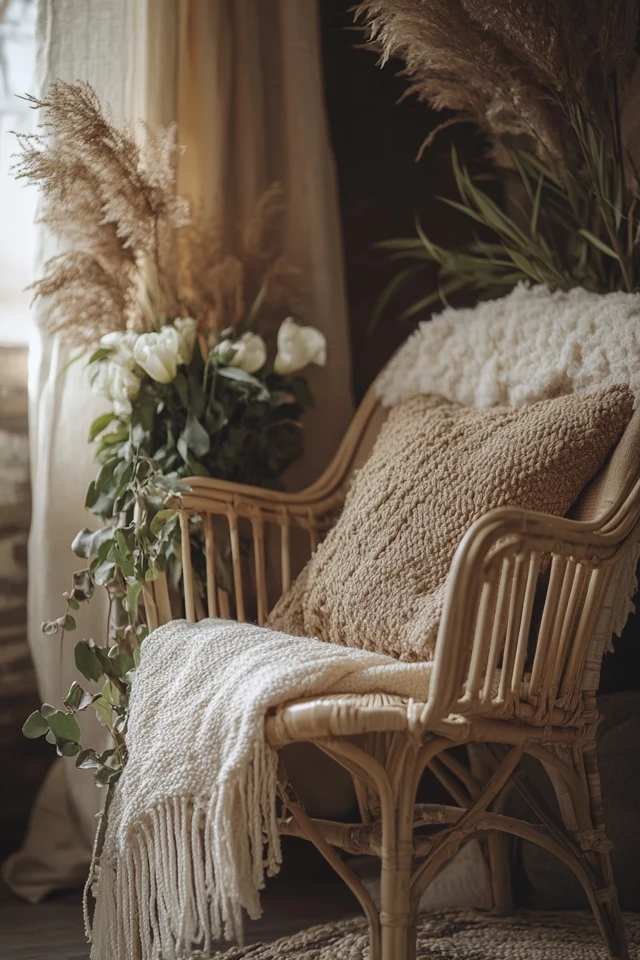
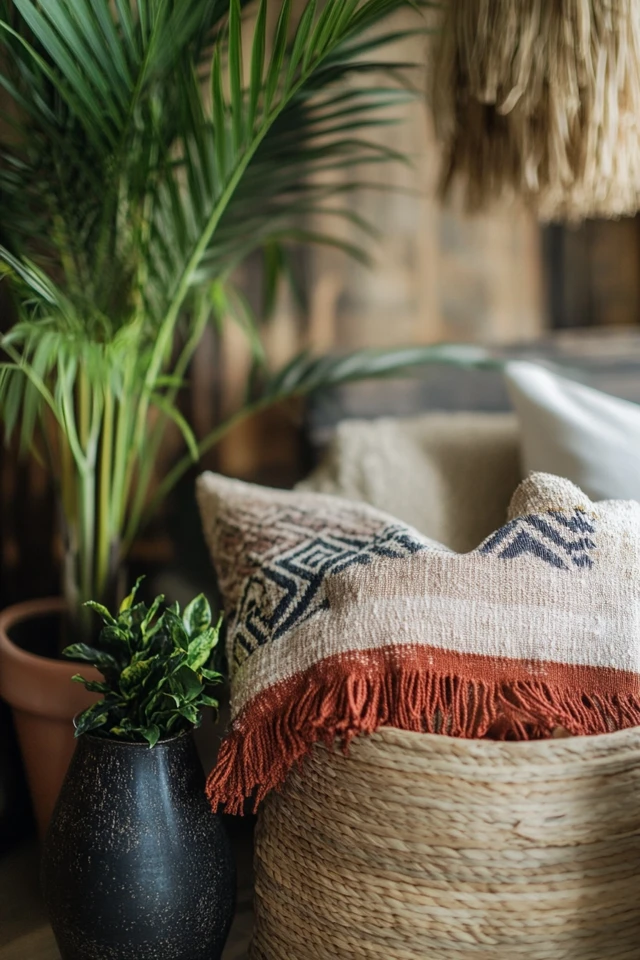
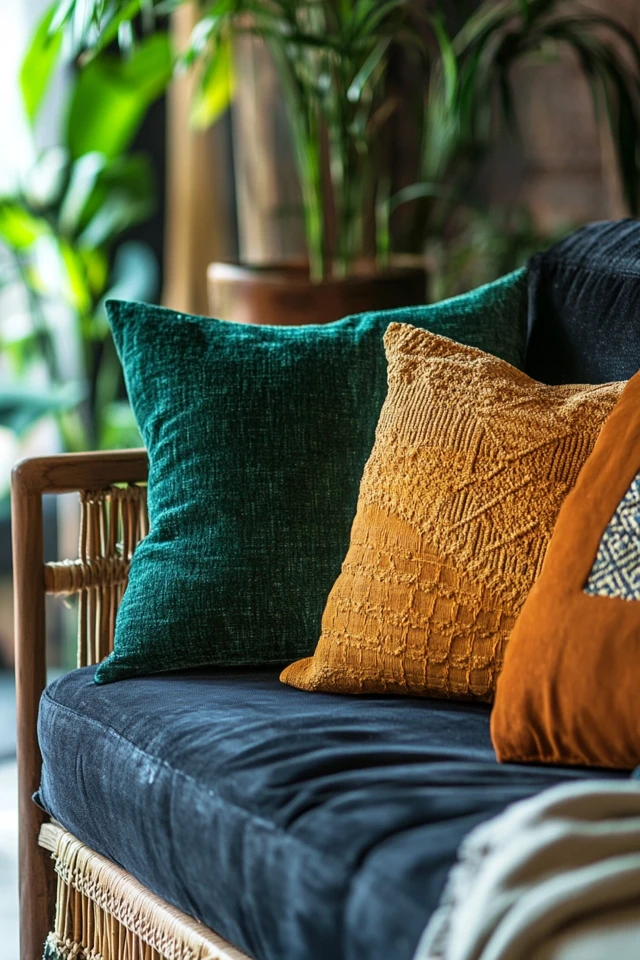
Why These Key Elements Work So Well Together
The use of natural materials is central to the bohemian aesthetic because it mirrors the organic, imperfect beauty found in nature. Here’s why these elements blend seamlessly in a boho-inspired interior:
- Rich Textures: Materials like rattan, wool, and jute add depth and tactile interest, creating a cozy and layered environment.
- Earthy Tones: The warm, neutral tones of wood, leather, and clay complement boho’s laid-back vibe, serving as a grounding element amidst bold patterns and colors.
- Sustainability: Many natural materials, such as bamboo, cork, and reclaimed wood, are eco-friendly and align with bohemian design’s appreciation for thoughtful, sustainable living.
- Timeless Appeal: Unlike synthetic materials, natural elements age gracefully, developing patinas and textures that add character and history to your space.
- Versatility: Natural materials are incredibly adaptable, blending effortlessly with other boho staples like vibrant textiles, macramé, and greenery.
How to Incorporate Natural Materials Into a Bohemian Interior: Step-by-Step
- Start With a Neutral Foundation:
- Use natural materials like wood or cork flooring as a base. A jute or sisal rug layered on top adds softness and texture.
- Opt for neutral-colored walls or textured wallpaper made from grasscloth to set a calming tone.
- Choose Wooden Furniture:
- Incorporate wooden elements like a live-edge dining table, reclaimed wood shelves, or a carved headboard.
- Pair lighter woods like oak or bamboo with darker finishes for contrast and dimension.
- Add Woven Textures:
- Use rattan or wicker furniture, such as armchairs, coffee tables, or benches, to infuse the space with a laid-back vibe.
- Incorporate woven accents like seagrass baskets, macramé plant hangers, or cane webbing on furniture.
- Layer With Soft Textiles:
- Add throws and cushions made from natural fabrics like linen, cotton, or wool. Look for pieces with fringe, tassels, or handwoven details for a boho touch.
- Use lightweight, sheer curtains made from organic cotton or linen to soften the space.
- Incorporate Leather and Hide:
- Include leather accents, such as a distressed leather armchair, pouf, or ottoman, for a rustic yet refined look.
- Layer a cowhide rug or sheepskin throw for added texture and warmth.
- Include Handmade Ceramics:
- Use ceramic vases, bowls, or planters to add artisanal charm. Look for pieces with imperfect shapes and earthy glazes to emphasize their handcrafted quality.
- Introduce Natural Stone:
- Incorporate stone elements like a marble countertop, slate tiles, or a sandstone centerpiece. These materials add a sense of permanence and elegance to the space.
- Add Greenery:
- Bring in plants like monstera, fiddle-leaf figs, or trailing pothos. Pair them with planters made from terracotta, wood, or seagrass.
- Use natural materials for hanging planters, such as macramé or woven baskets.
- Use Reclaimed or Upcycled Materials:
- Look for furniture or decor made from reclaimed wood, recycled glass, or vintage textiles to add a sustainable and one-of-a-kind touch.
- Incorporate Subtle Lighting:
- Use lamps or pendant lights with shades made from bamboo, rattan, or linen.
- String lights or candles in natural holders, such as wood or stone, create a warm and inviting atmosphere.
FAQ Section
Q1: Are natural materials expensive to incorporate into interior design?
A1: Not necessarily! Look for affordable options like jute rugs, wicker baskets, or second-hand wooden furniture. Thrift stores and flea markets often have budget-friendly, natural-material pieces.
Q2: How do I care for natural materials like rattan and wood?
A2: Dust regularly with a soft cloth and avoid placing natural materials in direct sunlight or high-humidity areas to prevent damage. Use a mild cleaner for wood and a damp cloth for rattan.
Q3: Can I mix natural materials with modern decor?
A3: Absolutely! Combining natural elements with sleek, modern furniture creates a beautiful contrast that adds depth and personality to your space.
Q4: How do I prevent a room with natural materials from feeling too rustic?
A4: Balance the natural elements with refined touches, such as metallic accents, minimalist decor, or sleek furniture pieces.
Q5: Are there eco-friendly options for natural materials?
A5: Yes! Look for FSC-certified wood, recycled textiles, and fair-trade products. Bamboo and cork are also sustainable, fast-growing materials.
Variations
- Minimalist Boho: Focus on fewer, high-quality natural elements, such as a rattan chair and a linen sofa, for a clean and serene look.
- Rustic Boho: Incorporate rough-hewn wood, leather accents, and stone for an earthy, cabin-like vibe.
- Tropical Boho: Use bamboo furniture, seagrass rugs, and plenty of greenery to create a lush, island-inspired feel.
- Modern Boho: Pair natural materials like wood and rattan with sleek, contemporary furniture and metallic accents for a fresh, updated take on bohemian style.
How to Showcase It
- Living Room Centerpiece: Use a reclaimed wood coffee table or a rattan armchair as the focal point of your living room.
- Dining Area Charm: Incorporate a live-edge wooden dining table with woven chairs and linen table runners for a relaxed yet elegant vibe.
- Bedroom Sanctuary: Create a cozy retreat with a rattan headboard, layered wool throws, and handmade ceramic bedside decor.
- Outdoor Oasis: Style your patio with bamboo furniture, jute rugs, and terracotta planters for an alfresco boho haven.
Occasions to Feature It
- Housewarming Parties: Showcase the organic beauty of natural materials to impress your guests.
- Relaxation Retreats: Use natural textures and tones to create a calming environment for unwinding after a long day.
- Seasonal Decor Updates: Swap lightweight summer fabrics for cozy wool and leather accents during cooler months.
Conclusion
Natural materials are the foundation of a bohemian interior, bringing warmth, texture, and authenticity to your space. By incorporating elements like wood, rattan, linen, and ceramics, you can create a home that feels both stylish and connected to nature.
Whether you lean toward rustic, tropical, or modern boho, the versatility of natural materials allows you to adapt the look to your personal style. Experiment, layer, and let the organic beauty of these elements transform your space into a bohemian retreat that feels timeless and welcoming.

